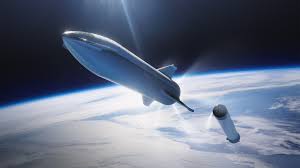
Breaking News
 This roof paint blocks 97% of sunlight and pulls water from the air
This roof paint blocks 97% of sunlight and pulls water from the air
 'Venomous' Republican split over Israel hits new low as fiery feud reaches White House
'Venomous' Republican split over Israel hits new low as fiery feud reaches White House
 Disease-ridden monkey that escaped from research facility shot dead by vigilante mom protecting...
Disease-ridden monkey that escaped from research facility shot dead by vigilante mom protecting...
 Hooters returns - founders say survival hinges on uniform change after buying chain...
Hooters returns - founders say survival hinges on uniform change after buying chain...
Top Tech News
 The 6 Best LLM Tools To Run Models Locally
The 6 Best LLM Tools To Run Models Locally
 Testing My First Sodium-Ion Solar Battery
Testing My First Sodium-Ion Solar Battery
 A man once paralyzed from the waist down now stands on his own, not with machines or wires,...
A man once paralyzed from the waist down now stands on his own, not with machines or wires,...
 Review: Thumb-sized thermal camera turns your phone into a smart tool
Review: Thumb-sized thermal camera turns your phone into a smart tool
 Army To Bring Nuclear Microreactors To Its Bases By 2028
Army To Bring Nuclear Microreactors To Its Bases By 2028
 Nissan Says It's On Track For Solid-State Batteries That Double EV Range By 2028
Nissan Says It's On Track For Solid-State Batteries That Double EV Range By 2028
 Carbon based computers that run on iron
Carbon based computers that run on iron
 Russia flies strategic cruise missile propelled by a nuclear engine
Russia flies strategic cruise missile propelled by a nuclear engine
 100% Free AC & Heat from SOLAR! Airspool Mini Split AC from Santan Solar | Unboxing & Install
100% Free AC & Heat from SOLAR! Airspool Mini Split AC from Santan Solar | Unboxing & Install
 Engineers Discovered the Spectacular Secret to Making 17x Stronger Cement
Engineers Discovered the Spectacular Secret to Making 17x Stronger Cement
SpaceX Super Heavy Starship 2.0 Will Be 8 Times Bigger Than Super Heavy Starship

This would mean the area of the cross-section would be 4 times higher. If the height was also doubled then it would have 9 times the volume. The engines would likely be upgraded for the Ultra Heavy Starship 2.0. This means the next rocket might be able to launch over 1000 tons per launch.
This would be about twice the payload of the Sea Dragon. The Sea Dragon was a 1962 conceptualized design study for a two-stage sea-launched orbital super heavy-lift launch vehicle. The project was led by Robert Truax while working at Aerojet. It would have had a payload capacity of 550 tons. It would have been 150 meters tall and 23 meters in diameter.
The SpaceX Super Heavy Starship 2.0 may also be limited on height. Tovera Vashini on twitter notes that rocket height is limted by thrust per area. This could mean that SpaceX Super Heavy Starship 2.0 may also end up very near the Sea Dragon in capacity.
In 2016, SpaceX had a 12-meter diameter ITS rocket design. It was designed to launch 300 tons to orbit and with refueling could launch 450 tons to Mars.



